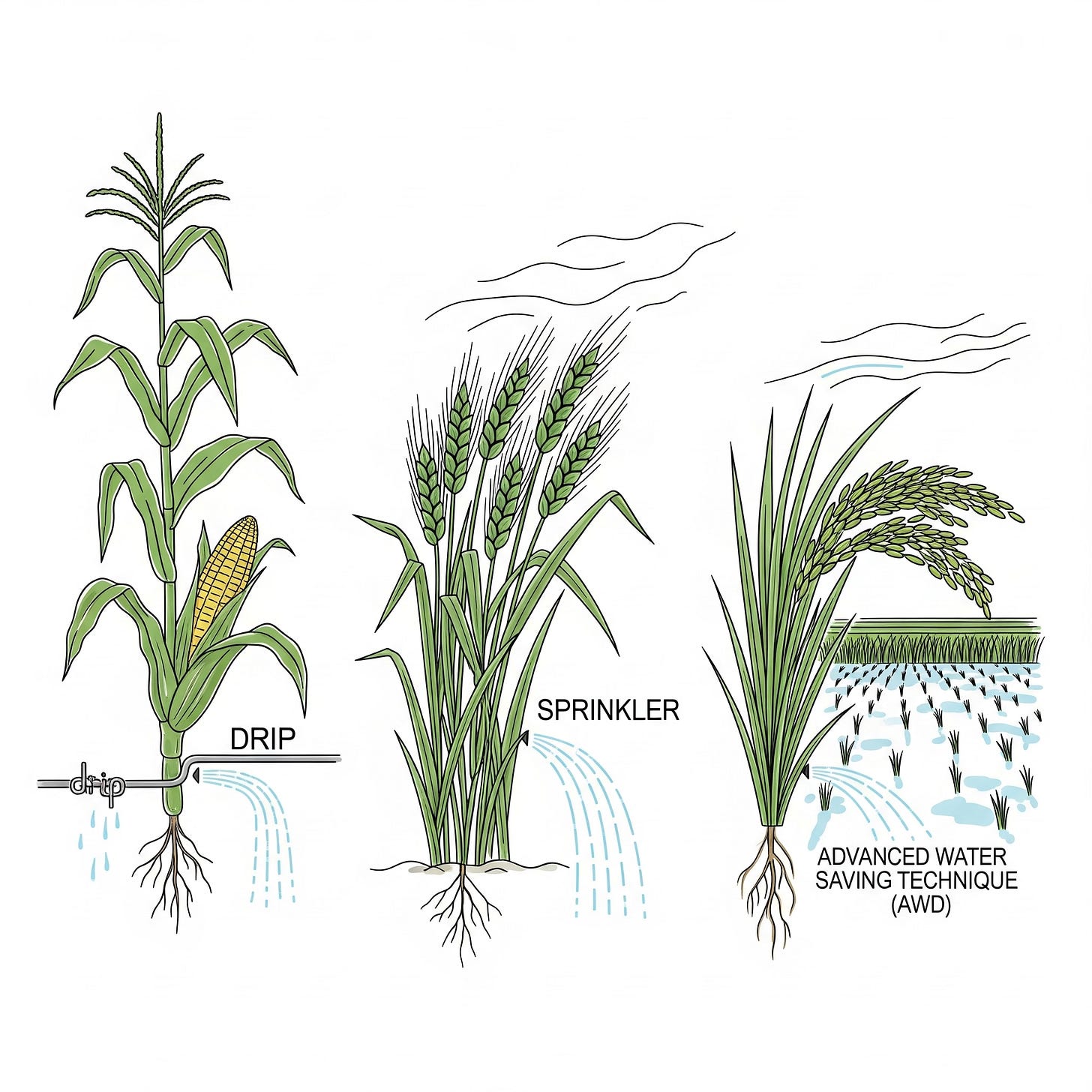Water-Saving Irrigation for Specific Crops: Corn, Wheat, Rice
Smart Watering Strategies for Our Global Staples
Corn, wheat, and rice are the cornerstones of global food production, feeding billions worldwide. However, their cultivation often requires substantial amounts of water, putting pressure on finite freshwater resources. Adopting water-saving irrigation practices for these staple crops isn't just good for the environment; it's also crucial for your farm's long-term economic viability.
Water-Saving Irrigation Strategies for Specific Crops:
Corn (Maize): Corn uses a lot of water, especially during key growth stages like tasseling, silking, and grain fill. Drip irrigation (or Subsurface Drip Irrigation - SDI) is highly recommended. It sends water directly to the plant's roots, cutting down on evaporation, runoff, and water loss deep into the soil. SDI, with buried drip lines, can make this even more efficient. If drip isn't an option, precision sprinkler systems like Low Energy Precision Application (LEPA) or Low Elevation Spray Application (LESA) can help by applying water close to the ground, reducing wind drift and evaporation. It's smart to schedule irrigation based on critical stages, focusing efforts during those crucial periods when water stress can really hurt your yield. Plus, using soil moisture monitoring with sensors can tell you exactly when and how much to water, taking out the guesswork.
Wheat: Wheat's water needs vary a lot depending on its growth stage, with peak demand during tillering, heading, and grain filling. Efficient sprinkler systems (like pivots or linear moves) with low-pressure nozzles or LEPA/LESA technology are great for large wheat fields. They ensure water is applied evenly and reduce evaporation. You might also consider deficit irrigation, which means giving the plant slightly less water than it fully needs during non-critical growth stages. This can save water without greatly affecting yield, especially where water is limited, but it does need careful monitoring. Rainfall harvesting and storage can also supplement your irrigation during dry spells, cutting down on your reliance on groundwater or surface water. Always irrigate at the right growth stages for maximum benefit, and try to avoid watering when there are strong winds to prevent water loss.
Rice: Rice is unique because it's often grown in flooded paddies, traditionally using a huge amount of water. But there are ways to save a lot! Alternate Wetting and Drying (AWD) is the most effective technique for paddy rice. Instead of continuous flooding, you let the field dry out for a few days before re-flooding it. This saves water significantly without cutting yields and can even reduce methane emissions. You can easily monitor water levels with a "field water tube." Aerobic rice cultivation is another option; it involves growing rice in non-flooded, upland conditions with extra irrigation, similar to other dryland crops. This uses much less water but might need specific rice varieties. The System of Rice Intensification (SRI), while not strictly an irrigation method, promotes smart water management, often using intermittent irrigation instead of constant flooding, along with practices like wider spacing. Finally, laser land leveling ensures water is spread evenly in rice paddies, stopping areas from getting over-flooded or under-watered, which also saves water.
Conclusion: Cultivating Resilience Through Water Wisdom
At Farmer's Chat, we believe the future of global food security depends on our ability to use water more wisely. By putting these water-saving irrigation strategies for corn, wheat, and rice into practice, farmers can play a key role in preserving precious freshwater while maintaining or even boosting their productivity. It's a win-win for your farm and the planet. As a non-profit initiative, we're committed to empowering farmers—the true backbone of civilization—with the knowledge and tools they need to adopt sustainable practices and build a more resilient agricultural system.
Be a leader in water-wise farming! Head over to our learning resources for more detailed guides and success stories. Connect with us on social media platforms to share your insights and learn from a community passionate about sustainable food production. Your engagement helps us keep going with our vital mission for agriculture and the planet.
#WaterSaving #Irrigation #CornFarming #WheatFarming #RiceFarming #SustainableAgriculture #WaterEfficiency #CropManagement #PrecisionIrrigation #AWD #SRI #FarmersChat #Farmers #Agriculture #VishalRajput




